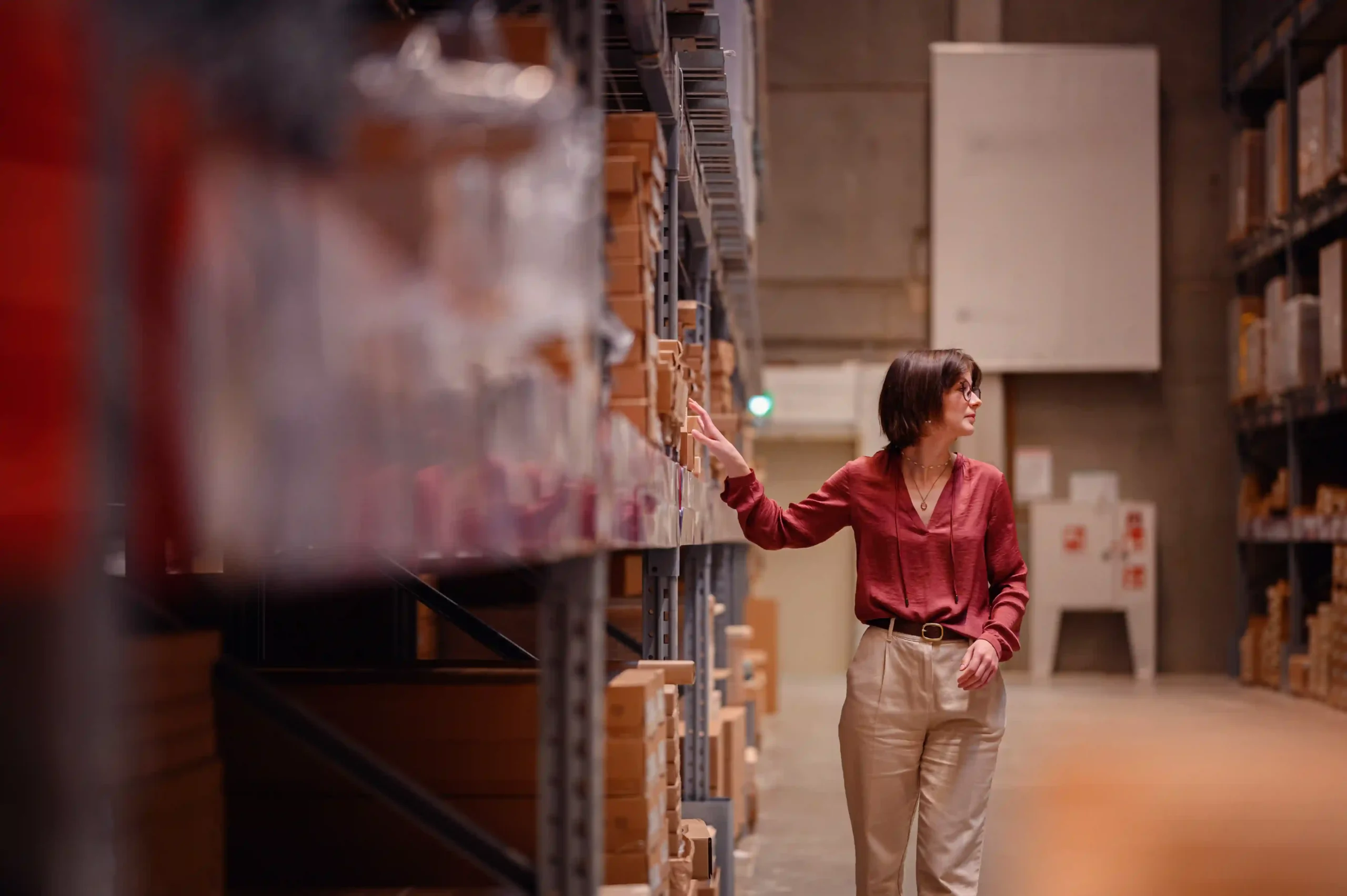In the logistics world, the term “types of storage system in warehouse” refers to the various methods and structures used to store goods efficiently. These systems are designed to optimize space, improve accessibility, and enhance overall warehouse productivity.
Choosing the right storage system is vital for operational success.

Over the years, I’ve encountered various storage systems, each with its unique advantages. Understanding these can help in selecting the most suitable one for your warehouse.
Pallet Racking Systems
Pallet racking is a staple in many warehouses. It’s ideal for storing large quantities of palletized goods. The design allows for easy access and efficient use of vertical space. However, it requires significant floor space and is best suited for warehouses with high ceilings.
Static Shelving
Static shelving is perfect for storing smaller items that don’t require forklifts for retrieval. It’s commonly used in warehouses dealing with lightweight goods. While it’s cost-effective, it doesn’t offer the flexibility of other systems.
Mobile Shelving
Mobile shelving systems are designed to maximize space by eliminating fixed aisles. Shelves are mounted on tracks, allowing them to move and create access aisles as needed. This system is excellent for warehouses with limited space but requires careful planning to ensure safety.
Multi-Tier Racking
Multi-tier racking systems utilize vertical space by creating multiple levels of storage. They’re ideal for warehouses with high ceilings and a need to store a variety of items. However, they can be more expensive to install and may require additional safety measures.
Mezzanine Flooring
Mezzanine floors add an extra level to your warehouse, effectively doubling the usable space. They’re customizable and can be used for storage, offices, or other purposes. While they offer significant benefits, they also come with higher costs and structural considerations.
Wire Partitions
Wire partitions are used to create secure areas within a warehouse. They’re ideal for storing valuable or sensitive items. These partitions are flexible and can be reconfigured as needed, but they don’t offer the same level of security as solid walls.
When selecting a storage system, it’s essential to consider efficiency, cost, and accessibility.
The size of your warehouse significantly influences the choice of storage system.

Each storage system has its advantages and disadvantages.
The nature of your inventory plays a crucial role in determining the appropriate storage system.
Advancements in technology have introduced innovative storage solutions.
Implementing these innovations can lead to significant improvements in warehouse operations.

To identify the most cost-effective storage solution, consider the following:
Over the past 35 years running Tri-Link FTZ, I’ve helped countless clients avoid unnecessary upgrades by starting with flexible, modular systems. One warehouse might begin with static shelving and later integrate pallet racking or mezzanine flooring as their operations expand.
Making the right decision early on not only saves money but reduces disruption to your logistics workflow. We also encourage clients to invest in storage systems that work well with warehouse management systems (WMS).
When your software and physical infrastructure speak the same language, you eliminate wasted motion and speed up order fulfillment. With today’s tools, it’s easier than ever to integrate real-time inventory visibility with shelving zones, mobile racks, and automated lifts—all part of designing smarter, more cost-effective solutions.
No matter which types of storage system in warehouse environments you use, safety should always come first. In our line of work at Tri-Link FTZ, I’ve seen how a well-designed storage system directly contributes to a safer workspace.
And believe me, avoiding workplace injuries isn’t just about compliance—it’s about maintaining productivity and peace of mind. We make sure all racking systems meet OSHA and local fire code regulations, especially when installing multi-tier or high-bay pallet racking.
Guardrails, rack end protectors, netting, and wire cages are all essential to protect workers from falling items or accidental collisions with forklifts. For mezzanine installations, we always recommend including proper staircase with handrails, weight-rated flooring, and safety gates.
Don’t skip these extras—they’re not luxuries, they’re necessities. We also emphasize the importance of regular inspections.
A damaged shelf might not seem like an emergency, but one weak point can cause a serious collapse under load. Training your staff to recognize signs of wear or improper use is a critical part of warehouse safety culture.
I’ve had clients thank us years later for helping them set these policies early
In the long run, selecting the right storage system can completely transform your warehouse. We’ve had clients double their order capacity without expanding their footprint—just by shifting from scattered shelving to a mezzanine and racking system tailored to their workflow.
That kind of optimization creates a cascade of benefits. You’ll see faster pick times, fewer mis-shipments, and lower labor costs when your team isn’t zigzagging through inefficient aisles.
Your inventory becomes easier to count and track, especially when zones are logically structured around your storage type. Plus, well-designed storage just looks more professional—which matters when vendors, auditors, or clients come through.
Choosing the right types of storage system in warehouse design also means your space will be more flexible in the future. Whether you add more SKUs, pivot to ecommerce, or scale your distribution network, your infrastructure will be ready.
At Tri-Link FTZ, we always remind clients: smart storage isn’t a one-time project—it’s a foundation for growth.

At Tri-Link FTZ, we’ve built a reputation for helping clients navigate these decisions with clarity and confidence. We’ve operated in the 3PL and foreign trade zone space for more than three decades, and we’ve seen it all—from small startups with 2,000 square feet of space, to large-scale importers managing tens of thousands of pallets per month.
Our process always begins with understanding your operational goals. We walk your space, analyze your product flow, and map out bottlenecks.
Then we recommend a blend of storage solutions tailored to your current needs and future growth. Whether it’s implementing pallet racking in a U.S. customs-bonded warehouse or integrating AS/RS for a pharmaceutical client, we approach every project like a partner, not just a provider.
The keyword “types of storage system in warehouse” isn’t just a phrase to us—it represents the countless decisions that go into building a truly efficient operation. And we’re here to help you make the right ones.
Understanding the different types of storage system in warehouse operations isn’t just helpful—it’s essential if you’re serious about improving logistics. There’s no one-size-fits-all approach, and that’s exactly why this decision requires time, analysis, and expert support.
We hope this guide has given you not only a comprehensive look at your options, but also the insight to know what questions to ask next. If you’re ready to transform your warehouse, optimize your layout, and make room for growth, let’s talk.
At Tri-Link FTZ, we bring decades of experience, custom strategy, and hands-on support to every client we serve.
Share this article
We have other resources available upon request as well as one-on-one support and personalized answers, just like our services.
Simply contact us anytime and we’ll get back to you to answer your questions and provide meaningful answers that show you how Tri-Link supports your logistics, reduces costs, and accelerates efficiency.
Tri-Link delivers exceptional FTZ and 3PL services tailored to your global trade needs.
Our solutions combine innovation, quality, and efficiency to exceed your expectations and meet your specific requirements.